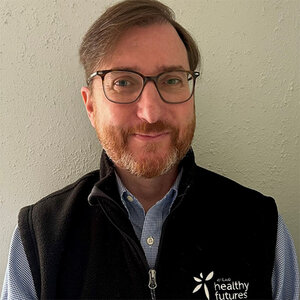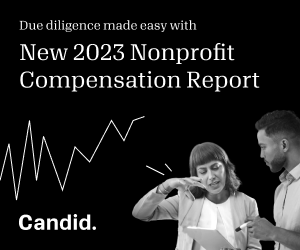Youth mental health: Philanthropy must move boldly to change and save lives

As we approach Mental Health Awareness Month in May, we must look into our communities’ collective mirror and reflect and act on the magnitude of the youth mental health crisis in the United States, which has reached alarming and heartbreaking new levels. It represents a public health crisis and a social justice issue for this generation. Our collective response will be a defining moment for our nation and our children.
In October 2021, three leading organizations—the American Academy of Child and Adolescent Psychiatry, American Academy of Pediatrics, and Children’s Hospital Association—declared a National State of Emergency in Children’s and Adolescent Mental Health. U.S. surgeon general Vivek Murthy also issued an urgent advisory calling for the protection of youth mental health. In 2023, the U.S. Centers for Disease Control and Prevention published a report highlighting the profound depth of it all, with four in 10 high school students feeling persistently sad or hopeless, with underlying realities across racial and ethnic groups, LGBTQ+ students, and female students.
The mental health crisis is exponentially magnified for BIPOC (Black, Indigenous, and people of color) and LGBTQ+ youth. The devastating effects of racism, bias, and other compounding factors place them at significantly greater risk for mental health conditions. The related challenges of exclusion and loneliness, fueled in part by the ubiquity and toxicity of social media, plus lingering and exacerbated effects from the pandemic, can affect all kids and especially BIPOC and LGBTQ+ youth.
LGBTQ+ youth are four times more likely than their straight peers to attempt suicide. The Trevor Project estimates that more than 1.8 million LGBTQ+ youth and young adults (aged 13-24) seriously consider suicide each year in the U.S.—and at least one attempts suicide every 45 seconds.
Today, overall, one in six children and youth (ages 6-17)—tallying in the millions—experience a mental health condition, including anxiety, depression, and suicidal ideation. Yet fewer than half receive mental healthcare services. Imagine any other medical condition ravaging our homes, neighborhoods, and schools with such a widespread lack of access, care, and treatment.
The situation is heartbreaking. And these aren’t just statistics. There is a name, life, face, and future next to every number.
With renewed purpose and urgency, philanthropy can and must bring leadership, partnerships, and resources to address the mental health epidemic.
The mental health continuum spans the spectrum from awareness, prevention, and support to crisis, treatment, and recovery. Millions of youth—with their families and friends—cling perilously to these daunting realities every day.
The widened on-ramps to the crisis, outlined by the World Health Organization and adapted by the U.S. surgeon general, illustrate its vulnerable and pervasive nature. Consider kids and their proximity to vast factors that boomerang them into crisis today: Academic pressure. Bullying. Media and pop culture. Poverty. Domestic abuse. School massacres. Addictions. Crime. Trauma. Discrimination. And so much more. And that’s without mentioning factors such as age, race, ethnicity, gender, sexual orientation, disability, beliefs, and genetics. It is unrelenting.
With suicide as the second leading cause of death among our youth, and its rates dramatically rising, we must heed this desperate plea for help and call to action.
Overwhelmed by the staggering scale of the crisis and steeled by my own and many others’ experiences of personal traumas and tragedies, I have embarked on a set of “What can we do together?” conversations with leading organizations on the front lines of caring for youth and their mental health.
I have been enlightened and inspired by many strategies and examples that illustrate the critical role of philanthropy to confront and support the mental health crisis. Partnerships and funding can increase compassion and acceptance, reduce stigma and prejudice, and expand resources and services. Philanthropy can also support initiatives to listen to and learn from affected kids, engage parents and teachers, deliver treatment and care, deepen research and advocacy, and so much more.
Specific examples include:
- Providing K-12 school districts with mental health experts and evidence-based practices
- Supporting youth’s social and emotional skills development with culturally relevant services and resources
- Reinforcing afterschool programs with trauma-informed counselors and activities
- Creating peer-to-peer youth networks with expanded knowledge and tools for many situations
- Delivering workshops and training to parents about supporting their children and deescalating moments of crisis
All of these efforts can protect, change, and save lives.
Rite Aid Healthy Futures is taking the next step in our own journey to advance racial equity and health equity, while addressing daunting societal issues, by forging partnerships with six leading organizations addressing the mental health crisis: Active Minds, Boys & Girls Clubs of America, the JED Foundation, McLean Hospital, the Steve Fund, and the Trevor Project. While our initial investment of $1.25 million in this program is modest, we know that every dollar will count. And this is just the first grant.
This extraordinary group will drive progress at both the community level, with focus in cities such as Boston, Detroit, Los Angeles, and New York, and at the system level, offering a blueprint for navigating mental health in the future.
We applaud their incredible commitment and contributions to the field, and we stand with these organizations and the many kids, families, and communities under their care. We walk together too with everyone experiencing mental health realities because no one can or should travel this path alone. And we hope that our society will also look into our communities’ collective mirror, saddened by the realities but emboldened by the opportunities, realizing that we must act together and forever for our children.
Matthew DeCamara serves as executive director of Rite Aid Healthy Futures, the public charity associated with the Fortune 150 health care company.







Addressing mental health for nonprofit program participants and staff